 |
Fig.1 The discovery of oil in the North Sea (Denmark, Norway and UK), shown in bars, peaked in 1973 and is broadly reflected in the subsequent peak and decline of oil production.

Fig.2 This graph plots the balance between consumption and discovery. World moved into deficit in 1982, as began to eat into its inheritance from past discovery
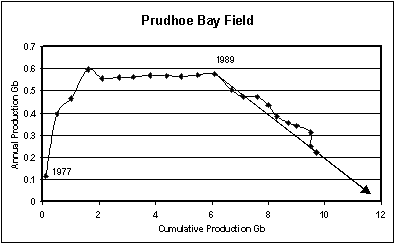
Fig.3 The decline of the Prudhoe Bay Field in Alaska with annual production compared plotted against cumulative production. It is evident that all the technology that has been applied since decline set in 1989 has added virtually nothing to the size of the field. Such plots help verify reported reserve estimates.
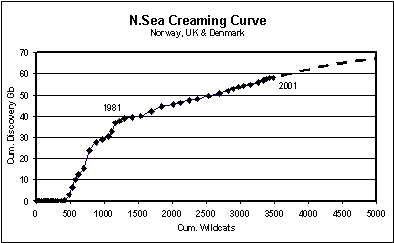
Fig. 4 Cumulative discovery plotted against exploration boreholes, which are responsible for discoveries. The larger fields are found first, being too large to miss, giving a hyperbolic trajectory that can be extrapolated to show what is left to find.
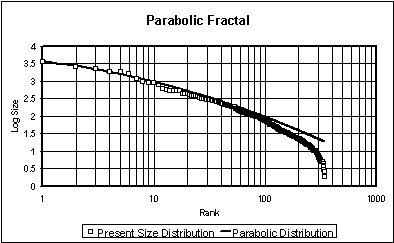
Fig. 5 Actual field size distribution plotted against rank (largest, second largest, third largest……) on a log-log scale, and compared with a parabolic model.
Fig. 6 Actual world production compared with the theoretical “Hubbert” bell-curve of unfettered depletion. There was a close fit until the oil shocks of the 1970s curbed demand, leading to a lower and later actual peak.

Fig. 7 Forecast production of all hydrocarbons, based on assessed resource and extraction rate (Gas is converted to oil equivalent on a value bases of 10 Tcf = 1 Gboe).
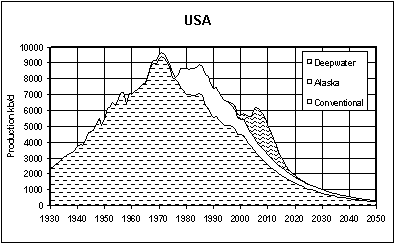
Fig. 8. Oil depletion profile of the United States, including Non-conventional deepwater and polar oil

F
.
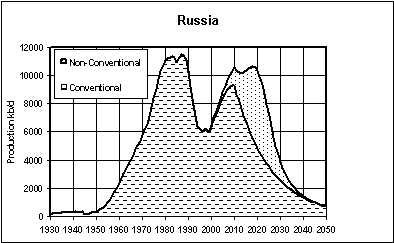
Fig. 10
Oil depletion profile of India, showing discovery in bars

Fig. 11 Oil depletion profile of Indonesia showing two cycles of discovery and corresponding production
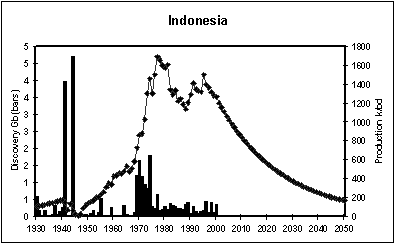 |
Fig
12 Oil depletion profile of
China, showing how the early peak of discovery is to be mirrored by production.

Fig. 13 Middle
East “creaming curve” showing confirming that it is a concentrated geological habitat with most of its oil in a few very large fields. The discovery trend shows that what remains to be found is less by orders of magnitude.
Fig. 14. Production from the five Middle East Swing countries, indicating the demands made upon them under the base case scenario of flat world demand to 2010 as mod
